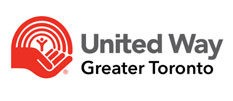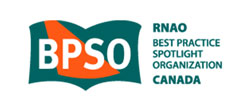The waiting pain
How does waiting for a transplant or to see if a transplant worked affect a child and their family? What does it do to relationships? What conversations does it spark? Can it provide healing or is it only destructive?
These are some of the questions Kristina Smith, one of VHA’s Junior Researcher Development Award recipients, is exploring in her PhD research into waiting as a form of suffering and how we can alleviate it for families.
Now in her fourth year of doctoral studies in Kinesiology and Physical Education, and is completing a collaborative degree with the Joint Centre for Bioethics at the University of Toronto, Kristina decided on this area of focus aGer taking a pain course in the nursing
department and learning more about pain from the health perspective. “I started to see the lack of resources – especially with kids,” she says. “We don’t understand how children experience pain and the different ways they might be suffering. And there hasn’t been a whole lot of study on the relational aspects of suffering, especially in health care, looking at the web of and how can we heal from this process aGer.”
VHA’s Junior Researcher Development Award offers mentorship and funding opportunities for young researchers who have an interest in studying and advancing evidence in home care.
“The people I’ve been working with at VHA have been so foundational and essential to my work. I needed access to children and their families and health care providers, and VHA connected me with different families who have had or are waiting for a transplant,” explains Kristina.
Together with her supervisor, Kristina developed a narrative ethnography framework for this research, looking into cultural and social activities and customs—a novel approach that “hasn’t been well used yet, but it’s an excellent method to understand a process and how that unfolds,” she explains. Using this framework, she visits the families primarily in their homes, but sometimes at hospital or joins them for appointments to see how they organize their life around waiting and to understand what they are living with.
One of the emerging themes over the past year of research has been the families’ sense of having to forge their own path. “One of the biggest things parents are
telling me is ‘There is no roadmap.’ The families don’t know what to expect and there’s no one to prepare them for what they are going through,” Kristina explains. And while the children are well taken care of, the families feel less tended to. “All of the families have
been so willing to talk to me, they to want to talk about this with someone—it’s been overwhelming. They’re saying, ‘Not enough people are talking to us or asking how we’re feeling.’ They are going through these processes with so many different people but not enough people are asking them these simple questions.”
“How can we improve this process of waiting? What different resources do we need? How can we talk to people differently? Knowing what happens to people and how their relationships are affected, how can we improve this process for all involved?” are some of the questions Kristina hopes to answer.
“I’m amazed by how strong these families and all the health care workers working with them are. The families have gone through so much trauma and they are still smiling every day and finding the joy in life.
It’s definitely taught me to not sweat the small stuff and to look at the bigger picture.”
support their teams through complex client conferences, clinical problem-solving and ongoing peer support. “Watching the new hires grow and
develop confidence in their abilities is one of the most rewarding parts of our job,” says Maya.
A one-day retreat designed for Clinical Leads put them in touch with each other and provided new tools and tips to help them lead for success.
Ask Clinical Lead (CL) Maya Majmudar what she loves doing, she’ll say it’s organizing, planning and looking aGer the details. Those skills are definitely an asset in her 40+ years as an Occupational Therapist and last 13 as a Clinical Lead. They also made her the perfect
candidate to lead the planning for VHA’s second Clinical Lead Retreat, held in November.
Although they are deeply embedded in every functional unit across VHA, the organization’s 31 Clinical Leads tend to work in isolation. Each professional area, whether it’s OT, Physio, Dietary, Nursing, Speech Therapy, Social Work or ADP, depends on the expertise
and management skills of the Clinical Leads. They provide orientation and training of new hires and It doesn’t stop there. Clinical Leads also maintain their own caseloads of clients and deliver hands-on care.
With their fingers on the pulse of so many parts of the organization, it’s no surprise that Maya calls the Clinical Leads “the bridge between management and the point of care team”.
Cultivating the talent within our own walls For inspiration in developing the retreat, the committee turned to a familiar place: their own staff. “We talked to staff and asked what they wanted to learn about,” says Maya. “We knew this had to be a meaningful experience.” Across the many voices of the Clinical Leads, there were some common themes – they wanted advice on time management; how to give helpful and
effective feedback; and how to empower their people.
With that input, a roadmap was developed for what would be the unifying theme for the day – Leading for Success. Fortunately, they didn’t have to look far for talented people to address those themes. “Within our own walls, we have incredible wisdom and expertise!” says Maya. Their first call was to Amit Ambegaonkar, who works for VHA as a Physiotherapist and Clinical Lead, and is also a leadership coach, certified success trainer and sought-aGer professional speaker.
Messages of inspiration and practical advice
With his lived experience on the job, Amit used a combination of video, a special booklet of advice for Clinical Leads, and his own compelling personality to deliver a message that was both practical and inspirational, touching on problem-solving, teamwork and mindfulness. “He didn’t hold back on the importance of creating a strong connection with your team and building the confidence of your new recruits,” says Maya.
Amit’s impact wasn’t lost on supervisor and Professional Practice Specialist Catherine Chater, who observed, “His talk sparked a renewed inspiration for us all to lead from a place of excellence and admiration.”
As they juggle numerous responsibilities, finding enough time in the day is an ongoing challenge for Clinical Leads. Delegates were upliGed to learn from their Clinical Lead colleague Punita Laurier that they shouldn’t try to do it all. Punita’s advice was to make a list of the 10 things you want to do, narrow it down to 5 and then focus on your top 3. “Her main takeaway was, don’t set yourself up for failure by trying to do too much,” said Maya. For managers and employees, performance reviews can be one of the toughest aspects of the job. The
external speaker for the day, innovation and change management specialist Lee-Anne McAlear, told them to consider the whole person and make the circle of connections between their strengths and weaknesses.
“Lee-Anne stressed the best way to make staff feel valued is to focus on strengths and let them know they’re being seen and understood.”
A chance to rekindle old friendships
Part of what makes VHA such a unique organization is the abundance of training opportunities. “Continuous learning is an integral part of the VHA culture. The Learning Calendar is always full and the training sessions are continuously being upgraded,” says Maya.
This retreat was a great addition to that because of the opportunity to connect face-to-face and to network with each other. They held a dinner the night before and several ice-breakers during the event. “We rarely meet face-to-face so it was great to see the new Clinical
Leads and talk to those who came in to Toronto from Ottawa and London,” said Maya.
In a note to the organizing committee, Catherine praised them for an event that “knocked it out of the park”. “Your CL work reverberates throughout this organization and has had such impact on the lives of clients, colleagues and the leadership of VHA.”
Hats of to the fabulous organizing commi1ee who leƒ no stone unturned in creating this impac{ul experience for the entire team: Maya Majmudar, Amanda Selk, Harpreet Bu1ar, Julie Jerred, Amit Ambegaonkar, Be1y Yu, Punita Laurier!










